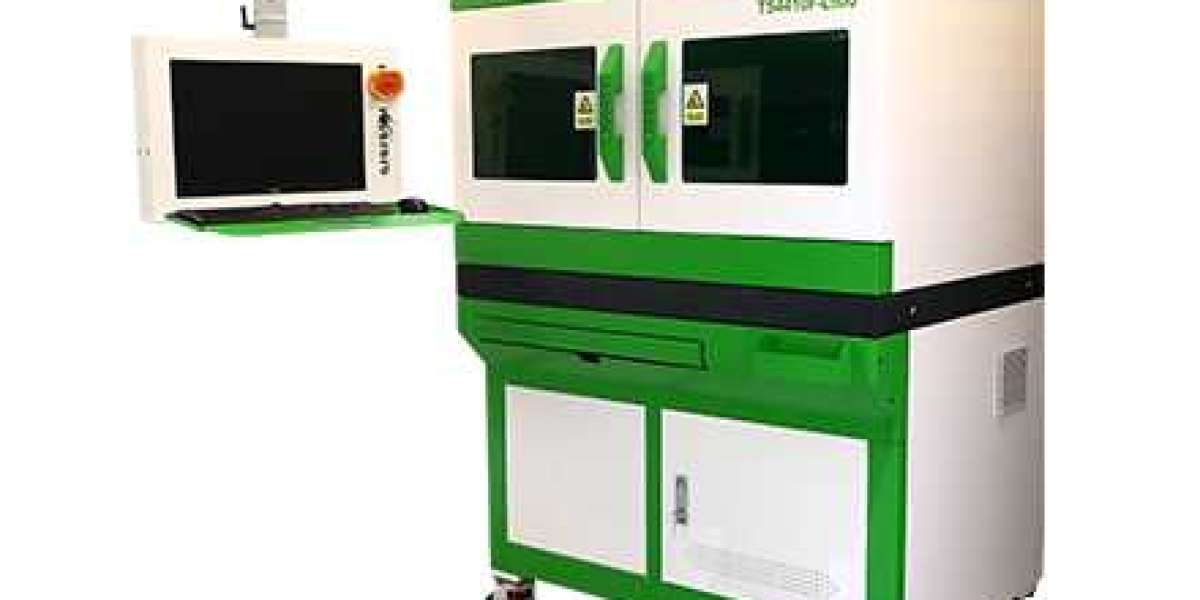In the world of electronics, precision is paramount. Whether you’re dealing with sensors, circuit boards, or other complex devices, accurate resistance values are critical to the device’s functionality and longevity. One advanced technique that ensures such precision is resistor trimming laser technology. This technique allows engineers and manufacturers to fine-tune the values of resistors, ensuring the components perform optimally in various applications.
What are Thick and Thin Film Resistors?
Before diving into the intricacies of resistor trimming laser technology, it’s important to understand the basic differences between thick film and thin film resistors. These two types of resistors are widely used in different fields, but they have key differences in terms of construction, performance, and application.
Thick Film Resistors: Thick film resistors are typically constructed by depositing a thick layer of resistive material (such as metal oxide) onto a ceramic substrate. The layer's thickness gives the resistor a wider range of resistance values. These resistors are often used in high-power applications because their thick layers are durable enough to withstand higher voltages and heat without degrading. However, their precision is slightly lower compared to thin film resistors, making them suitable for less critical applications where power handling is more important than fine precision.
Thin Film Resistors: In contrast, thin film resistors are made by depositing a thin layer of resistive material onto a substrate, often using techniques such as vacuum deposition or sputtering. The thin layer ensures high precision and consistency, making them ideal for applications that require tight tolerance, such as precision instrumentation and high-end electronic devices. Thin film resistors generally have better stability, lower noise, and a higher degree of accuracy, which is crucial in sensitive environments.
The Role of Resistor Trimming Lasers
Both thick film and thin film resistors may require adjustments to their resistance values to meet specific operational criteria. This is where resistor trimming laser technology plays a crucial role. Laser trimming involves using a laser beam to remove small amounts of resistive material from the surface of the resistor, thereby altering its resistance value. This process allows for precise modifications, which is especially useful when fine-tuning the resistance to exact specifications.
Laser Trimming for Thick Film Resistors: For thick film resistors, the laser trimming process can be more aggressive since the resistive material is thicker. These resistors often operate in high-power environments, where precise control over resistance is still important but not as stringent as in sensitive applications. Laser trimming enables manufacturers to achieve the required resistance without significantly affecting the structural integrity of the thick film.
Laser Trimming for Thin Film Resistors: The process for trimming thin film resistors is far more delicate. The thinner layer of resistive material requires a more controlled approach to ensure that resistance is adjusted without damaging the precision or stability of the resistor. Since thin film resistors are often used in critical applications, laser trimming allows engineers to make minute adjustments with extreme precision, ensuring that the resistor meets tight tolerances.
Benefits of Laser Trimming for Resistors
Laser trimming has become the go-to method for adjusting resistors because it offers several key advantages over traditional mechanical trimming methods. Some of the benefits include:
Precision: The primary advantage of using lasers for trimming resistors is the unparalleled level of precision it provides. Laser trimming can adjust resistance to within a few milliohms, making it ideal for both thick film and thin film resistors in sensitive applications.
Non-contact Method: Laser trimming is a non-contact process, meaning there is no risk of physically damaging the resistor or the substrate it is mounted on. Unlike traditional trimming methods, which might involve abrasive tools or mechanical processes, laser trimming eliminates the risk of mechanical stress, wear, or physical damage.
Speed and Efficiency: Laser trimming is much faster than traditional methods. The precision of the laser means fewer adjustments are needed, and the overall process is more efficient, reducing production time and costs.
Flexibility: The laser trimming process can be applied to a wide range of resistor types, including both thick and thin film resistors. This flexibility allows manufacturers to use the same equipment for different types of resistors without needing significant changes to the process.
Consistency and Repeatability: Laser trimming ensures that each resistor is modified with consistent results. Once the laser parameters are set, the trimming process can be repeated across many resistors with identical precision. This consistency is crucial for ensuring that each batch of resistors meets the same quality standards.
Reduced Risk of Contamination: Unlike mechanical methods, laser trimming does not produce dust or debris, which reduces the risk of contamination in sensitive applications such as medical devices or high-precision electronics.
Thick Film vs. Thin Film: Which to Choose?
When it comes to selecting between thick film and thin film resistors, several factors need to be considered, including the specific requirements of the application, the power handling needs, and the tolerance levels. Each type of resistor has its unique advantages and disadvantages:
Thick Film Resistors are often chosen for their high power handling capacity, durability, and cost-effectiveness. These resistors are commonly used in applications like power supplies, automotive electronics, and high-voltage circuits where precision is not the primary concern.
Thin Film Resistors, on the other hand, are preferred in applications that demand high precision, stability, and low noise, such as in medical devices, aerospace applications, and precision instrumentation. Their higher cost is justified by the accuracy and reliability they offer in critical environments.
Both types of resistors benefit from laser trimming, which enhances their accuracy and ensures that they meet the exact specifications required for their applications. For thick film resistors, laser trimming helps fine-tune the resistance for high-power environments, while for thin film resistors, it provides the precision needed for sensitive and high-precision electronics.
Conclusion
In conclusion, resistor trimming laser technology has revolutionized the manufacturing and adjustment of thick and thin film resistors. By utilizing precise laser beams to adjust resistance values, manufacturers can ensure that their resistors meet exact specifications without compromising performance. Whether used for high-power thick film resistors or high-precision thin film resistors, laser trimming offers a non-contact, efficient, and highly accurate solution. This technology not only improves production efficiency but also ensures that resistors perform optimally in a wide range of applications, from industrial machinery to sensitive medical devices.








